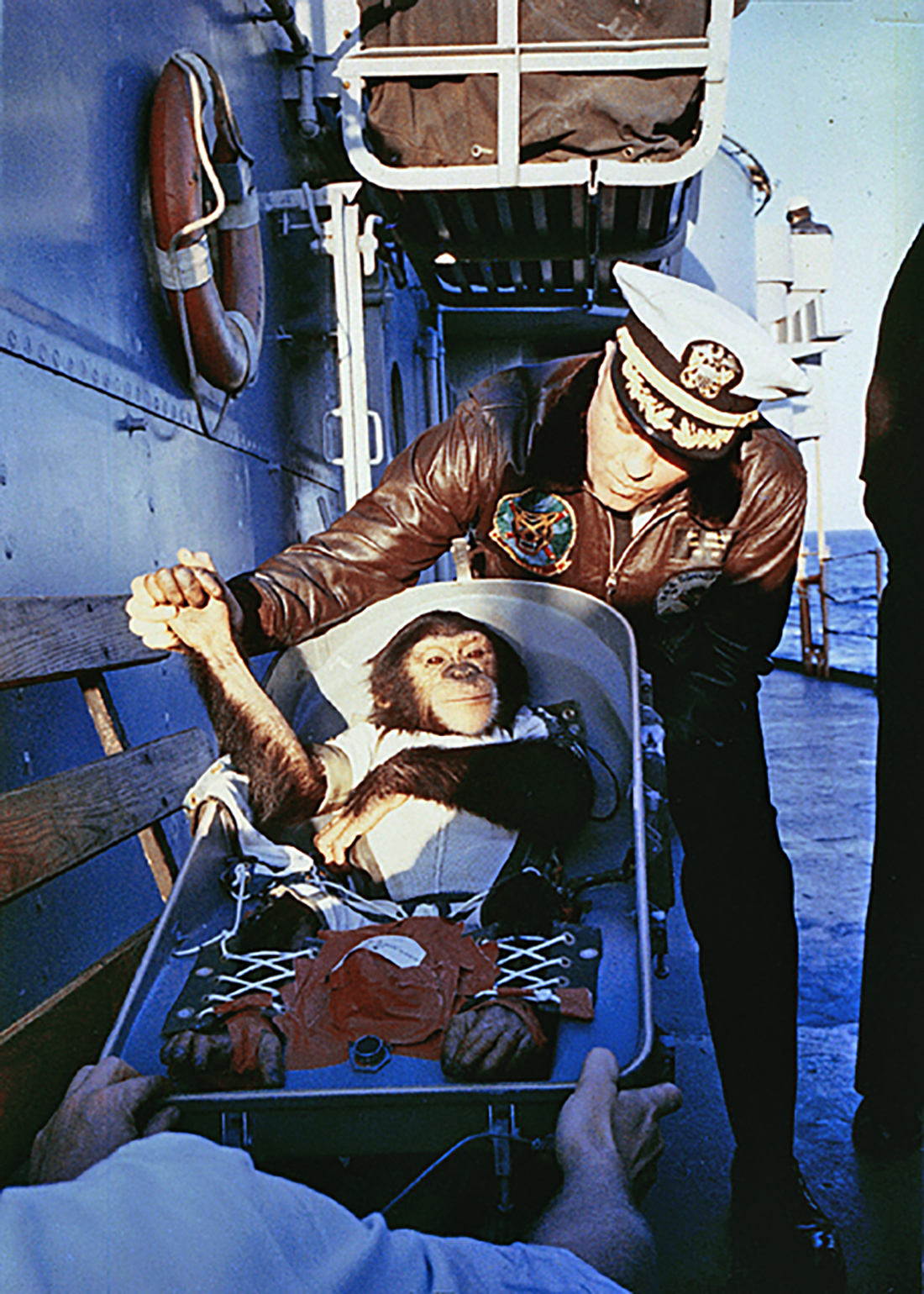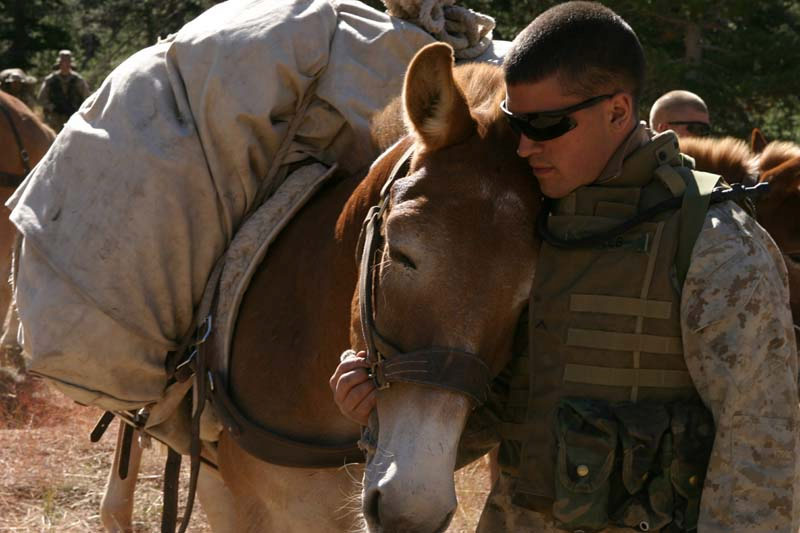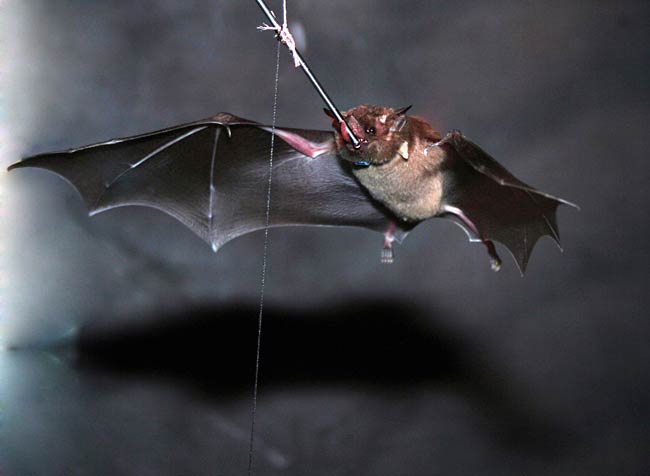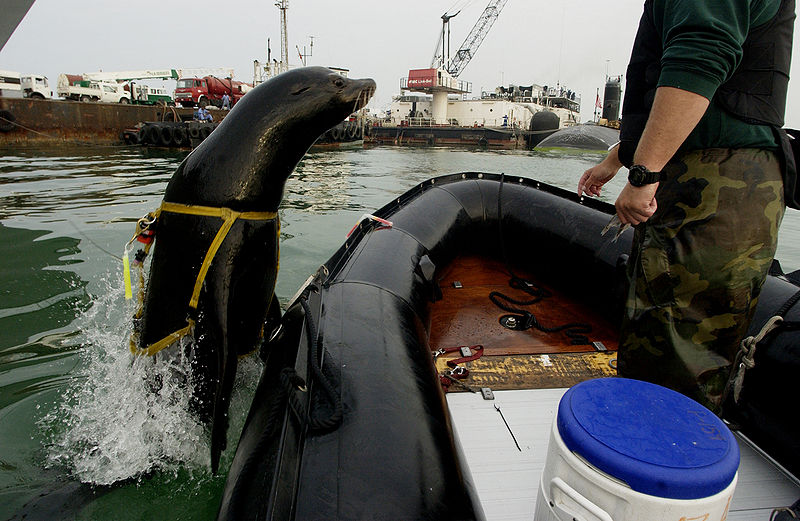Beasts in Battle: 15 Amazing Animal Recruits in War
Scorpions

The Romans armies faced an enemy even worse than bees when they besieged the Atrenians at the city of Hatra, near Mosul in modern-day Iraq, in 198 B.C. According to ancient accounts, the Atrenians seem to have perfected a method of handling scorpions without endangering themselves, which allowed them to fill clay pots with dozens of the stinging creatures and hurl them down on the attacking Romans.
"The insects fell into the Romans' eyes and on all the unprotected parts of their bodies," wrote Herodian of Syria early in the 3rd century A.D.: "digging in before they were noticed, they bit and stung the soldiers."
The hot climate and disease among the attackers did the rest, and the Romans eventually had to give up the siege of Hatra.
Historian Adrienne Mayor of Stanford University, who has published a book about ancient special tactics like scorpion bombs, thinks the Atrenians handled the scorpions by spitting on their tails, which allegedly puts them out of action and allows people to pick them up. Modern researchers who have recreated the scorpion bomb found a better way was to put the creatures in a fridge for a few minutes instead.
Animal astronauts

The first earthlings in space were not human astronauts, but many animals that took part in the Cold War "space race" between the U.S. and the Soviet Union, from the late 1940s to the 1970s. In the very first animal flight, in 1947, a flask filled with fruit flies reached an altitude of 68 miles (108 km) on a U.S. test flight of a captured German V2 rocket. The flask of flies descended by parachute and they were recovered, still alive.
Mice, frogs, guinea pigs, dogs and monkeys also earned their astronaut wings in the years that followed. A rhesus monkey named Albert became the first primate in space in 1948, also aboard an American V2 rocket. And in 1957, the Soviet space dog Laika became the first animal in orbit on Sputnik 3. Neither Albert nor Laika survived their space journeys, a common fate for many test flight animals.
America's most famous animal astronaut was Ham, the "first Hominid in space," who flew in a prototype Mercury capsule on a Redstone rocket on Jan. 31, 1961. Ham was selected for the flight from more than 40 prospective astrochimps by US Air Force scientists. He had been trained to pull on levers in response to flashing lights, receiving either banana pellet treats or mild electric shocks. The training experiments were repeated in flight — without the shocks — to see how his performance was affected.
Get the world’s most fascinating discoveries delivered straight to your inbox.
Ham flew for almost 17 minutes in a suborbital flight before his Mercury capsule splashed down in the Pacific Ocean. The chimp suffered only a bruised nose during the journey, and carried out all his lever-pulling tasks only a fraction of a second slower than on Earth, showing that humans too would be able to endure the stresses of spaceflight. Ham's historic journey paved the way to space for the first human astronauts.
Mules

Mules have played an unsung but crucial role throughout the history of warfare by carrying or hauling much of the food, water, tents, weapons, ammunition and other supplies needed by armies.
Born from a male donkey and a female horse, mules became preferred over horses for carrying loads because of their greater endurance and milder natures. They are also quite intelligent, as Charles Darwin noted, which has contributed to their stubborn reputation.
Roman legionaries were allotted one mule for every group of eight soldiers who shared a tent together, to carry their belongings and supplies. In 49 B.C., Julius Caesar began his rebellion against Rome by crossing the river Rubicon in a carriage drawn by a team of mules, which had been borrowed from a nearby bakery so that Caesar could travel without raising suspicions.
Sure-footed mules were also preferred to skittish horses in difficult country or crossing mountains: Napoleon Bonaparte rode a mule across the Alps as he led the French armies into Italy in 1800. During World War I, the U.S. Army used about 571,000 horses and mules in Europe during World War I, and lost about 68,000 that were killed in action.
Mules continue to be used in military tasks today, including with U.S. forces in Afghanistan, where they help keep open supply lines to remote mountain outposts. Mules used by the Pakistan Army are trained to carry a load of up to 160 pounds (70 kilograms) and to walk up to more than 14 miles (20 kilometers) before resting.
Bats

The bat bomb was a bizarre experimental weapon developed by the U.S. military during World War II, designed to start thousands of fires in cities across Japan in retribution for the Japanese attack on Pearl Harbor.
The bat bomb plan called for 1,000 live bats per bomb, with a tiny incendiary device fitted to each bat. All 1,000 bats would then be housed inside a casing that could be dropped from a U.S. warplane over Japan. The idea was that the bats and their attached incendiaries would then seek wooden Japanese homes and buildings to roost in, where they would kindle fires for the war effort.
The bat bomb plans seems to have been taken seriously, mainly because it was thought up by a friend of U.S. First Lady Eleanor Roosevelt. The plan received approval from President Roosevelt in 1942, and the U.S. military went on to spend more than $2 million dollars trying to get it to work. More than 6,000 bats were used in the bat bomb tests: most of them plunged straight to the ground or just flew away. But, they did manage to set fire to a simulated Japanese village, a U.S. Army hangar and a general's car before the program was abandoned.
Sea Lions

The same U.S. Navy program that identified bottlenose dolphins as potential military assets also highlighted the abilities of California sea lions. These marine mammals have excellent low-light vision and underwater hearing, and can swim 25 mph (40 km/h), and do repeated dives to depths of up to 1,000 feet (305 m).
As with its dolphins, the U.S. Navy continues to train sea lions to locate and mark the locations of marine mines and other threats — including enemy divers and swimmers. They are trained to attach a special leg cuff to human divers or saboteurs, which allows their handlers to haul the suspects to the surface.
A special sea lion harness also carries cameras that can provide live underwater video footage. Just one sea lion, two human handlers, and a rubber boat can replace a full-sized naval vessel, its crew and a group of human divers to search for objects on the ocean floor.


